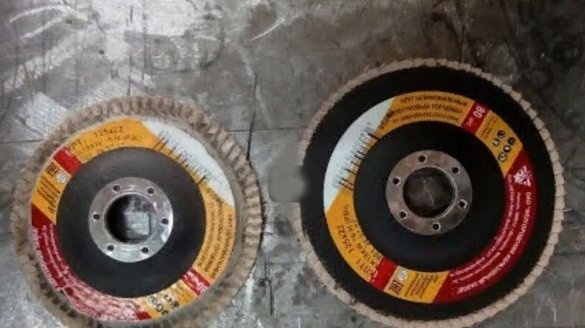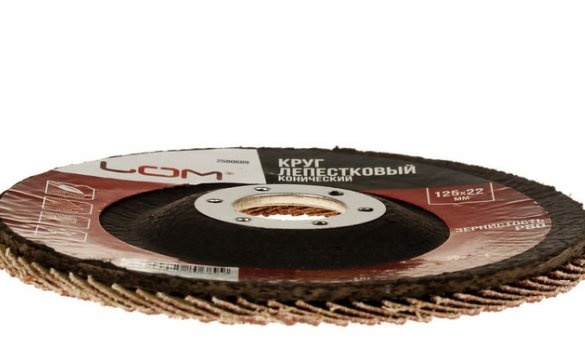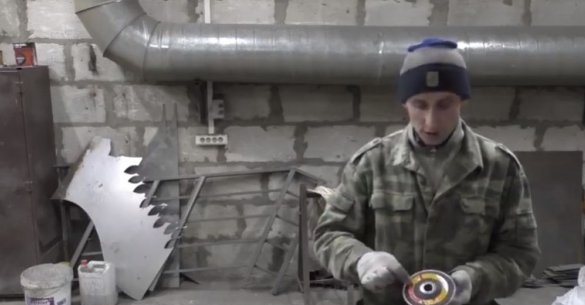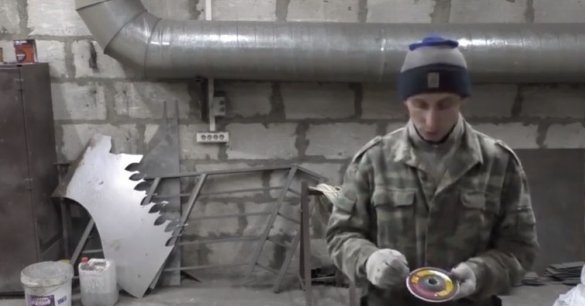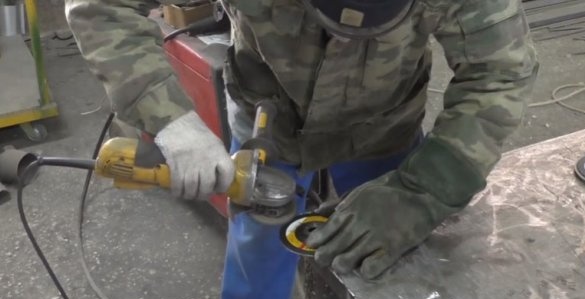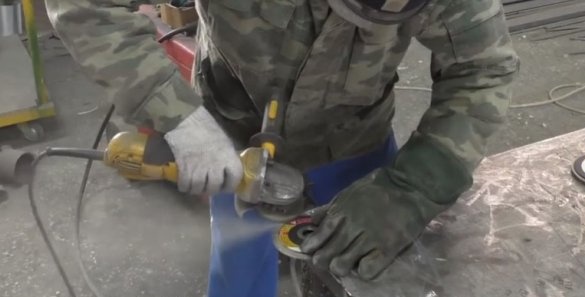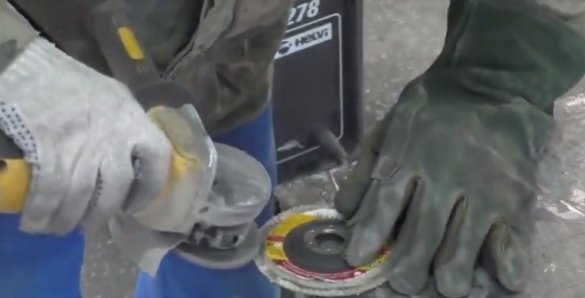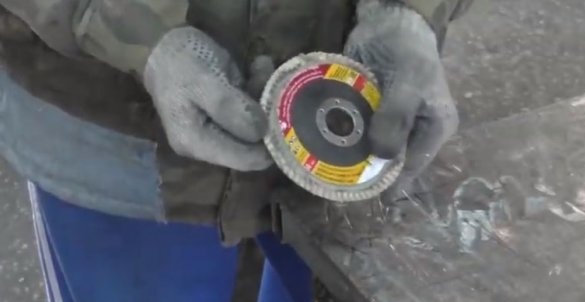When stripping hard-to-reach fillet welds with a grinder, it is very convenient to use flap end disks (or, in other words, circles). The edge of such a disk consists of overlapping petals of soft abrasive (sandpaper) glued to each other and, thanks to this, it perfectly reaches the connection surface of parts welded at an angle to each other.
The only trouble is that with the active use of the flap disc, its soft abrasive edges wear out relatively quickly and it becomes impossible to effectively use the circle for cleaning fillet welds.
However, there is a simple and witty way to "restore" the edge of the lap circle, allowing at least twice to extend its use precisely for cleaning the corner welded joints. All that is needed is a grinder with a grinding wheel, with the help of which they simply grind the supporting base (plate) of the blade circle by about 16 mm.
The work to restore the edge of the blade disc is not complicated, but requires caution and accuracy. It is performed as follows:
1. A circle with "worked out" petals is firmly pressed on the edge of the workbench so that about half of the circle is on weight.
2. Turn on the grinder and gently touch the grinding wheel to grind the material of the support plate of the blade circle evenly over its entire circumference.
3. As a result, the sharpened edge of the flap wheel acquires an additional length and can be operated again about the same time as it worked before recovery.
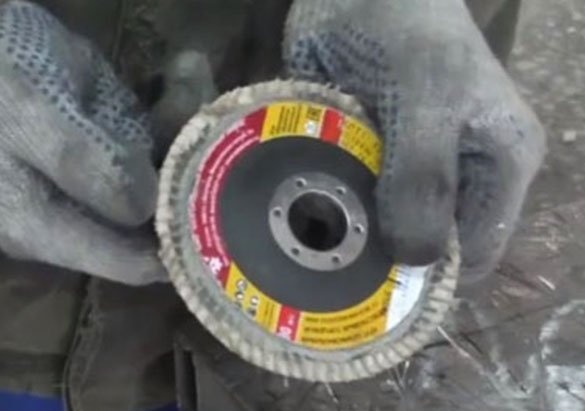
Here is such a simple and, most importantly, working way to restore the functionality of the edge of the petal circle. It is important not to forget to put on a respirator and protective gloves before work, as when dusting a fiberglass or plastic disk plate, a lot of dust is generated. After this dust gets on unprotected skin, it begins to itch strongly and for a long time.
Video how to “reanimate” the edge of a petal disc
[media = https: //youtu.be/gw_CadtFMEo]

